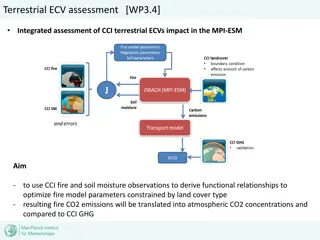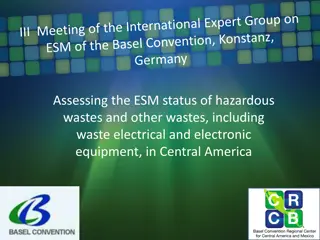
Collaborative Research Study in Emergency Medicine and Radiology
Explore a collaborative research study involving the Department of Emergency Medicine at Emory University Hospital, Greenville Health System, National Institutes of Health, and Clemson University. Dive into a simulated patient case and make medical imaging decisions in a clinical setting.
Download Presentation

Please find below an Image/Link to download the presentation.
The content on the website is provided AS IS for your information and personal use only. It may not be sold, licensed, or shared on other websites without obtaining consent from the author. If you encounter any issues during the download, it is possible that the publisher has removed the file from their server.
You are allowed to download the files provided on this website for personal or commercial use, subject to the condition that they are used lawfully. All files are the property of their respective owners.
The content on the website is provided AS IS for your information and personal use only. It may not be sold, licensed, or shared on other websites without obtaining consent from the author.
E N D
Presentation Transcript
Welcome! Collaborative research study between the Department of Emergency Medicine at Emory University Hospital, the Greenville Health System Departments of Emergency Medicine and Radiology, the National Institutes of Health, and Clemson University Department of Public Health Sciences
Consent Form Add here with large accept button (moves forward)/ large decline button (thanks and out)
Emergency Department or Urgent Care When completing this study, assume that you are the clinician caring for the simulated patient(s) at your usual location of practice.
Case #1, Nina Kitt Summary 58 year old female with a history of hypertension who slipped on ice while walking the dog 2 hours ago. The fall was witnessed by her husband who reports that his wife was knocked out, and regained consciousness when he attempted to rouse her ( within 1 min after the accident). Vitals: HR 78bpm RR 17 breaths/min He brought her to the hospital to get checked out because she fell hard. BP 134/85 The patient endorses tenderness at the location where she hit her head on the sidewalk SaO2 99% on Room Air Review of Systems: Reports a mild headache and nausea. Denies vomiting, change in vision and dizziness. Feels anxious since the fall happened. Past medical history: hypertension Medications: Lisonopril, HTCZ, baby aspirin
Case #1, Nina Kitt Vitals: Physical examination General: Well nourished female lying on the exam table with her head turned to the right. She appears anxious. HR 78bpm Head: 4 x 3 cm tender contused and swollen area on the left parietal region of her skull; no sign of skull fracture. No facial bruising or discoloration. RR 17 breaths/min BP 134/85 ENT: Tympanic membranes are visible with light reflex; no rhinorrhea present and mastoid processes show no signs ecchymosis. SaO2 99% on Room Air Cardio/pulmonary: Regular rate and rhythm. Clear to auscultation. No chest wall tenderness Abdomen: non-tender, bowel sounds present. Extremities: Warm and well perfused with no evidence of injury CNS: GCS 15; no weakness, paresthesia or focal deficits
Based on the presentation of this case, what medical imaging would you order for this patient? Imaging: Imaging Orders: _ CT Head without/with contrast _ CT Head without contrast _ No Imaging Click here to review patient Nina Kitt Patient has: Known normal kidney function No allergy to contrast
Computed tomography is only required for patients with minor head injury with any ONE of the following findings: Patients with minor head injury who present with a Glasgow Coma Scale score of 13 to 15 after witnessed loss of consciousness, amnesia, or confusion. High Risk for Neurosurgical Intervention Glasgow Coma Scale score lower than 15 at 2 hours after injury Suspected open or depressed skull fracture Any sign of basal skull fracture Two or more episodes of vomiting 65 years or older The Canadian CT Head Rule* Medium Risk for Brain Injury Detection by Computed Tomographic Imaging Amnesia before impact of 30 or more minutes Dangerous mechanism *The rule is not applicable if the patient did not experience a trauma, has a Glasgow Coma Scale score lower than 13, is younger than 16 years, is taking warfarin or has a bleeding disorder, or has an obvious open skull fracture. Signs of basal skull fracture include hemotympanum, raccoon eyes, cerebrospinal fluid, otorrhea or rhinorrhea, Battle s sign. Dangerous mechanism is a pedestrian struck by a motor vehicle, an occupant ejected from a motor vehicle, or a fall from an elevation of 3 or more feet or 5 stairs. (add hyperlink to references slide)- Appendix A
Imaging: Knowing the clinical decision rule presented, what medical imaging would you order for this patient? Imaging Orders: _ CT Head without/with contrast _ CT Head without with contrast _ No Imaging Click here to review patient Nina Kitt Patient has: Known normal kidney function No allergy to contrast
How do you sign your orders and prescriptions? Order Provider Information _ Nurse Practitioner _ Other _ Physician _ Physician s Assistant
Patient out-of-pocket expense Average patient out-of-pocket expense, after insurance, for a CT Head is approximately $843* Cost to Patient *Based on data collected at a Level I Trauma Center Southeast, U.S. (2015)
Knowing the patient out-of-pocket expense, what medical imaging would you order for this patient? Imaging: Imaging Orders: _ CT Head without/with Contrast _ CT Head without Contrast _ No Imaging Patient has: Known normal kidney function No allergy to contrast Click here to review patient Nina Kitt
Study of malpractice cases (1972-2014) where the clinician did not order a Head CT for a minor head trauma patient: Conclusion: A review of legal cases reported in a major online legal research system revealed 60 lawsuits in which providers were sued for failing to order head CTs in cases of head trauma. In all cases in which providers were found negligent, CT imaging or observation would have been indicated by every applicable clinical decision rule. Relevant Malpractice Case Law Note: Canadian Head CT rule included in study Lindor, R.A., et al., Failure to obtain computed tomography imaging in head trauma: a review of relevant case law, Acad Emerg Med, 2015; 22:1493-1498. (Abstract)
Based on the malpractice case law information presented, what medical imaging would you order for this patient? Imaging: Imaging Orders: _ CT Head without/with contrast _ CT Head without contrast _ No Imaging Patient has: Known normal kidney function No allergy to contrast Click here to review patient Nina Kitt
Case #2, Gilberta Shropshire Vitals: General 62 year old female slipped on a wet kitchen floor and fell backwards, striking the back of her head on the tile floor 2 hours ago. This was witnessed by her granddaughter. Her daughter states that she was out of it for a few moments . The patient was able to ambulate with assistance but feels woozy and nauseated. Pt was brought to the hospital by her grand daughter to makes sure her Grandma is ok HR 74bpm RR 16 breaths/min BP 138/92 Review of Systems Reports a mild headache and nausea. Denies vomiting, change in vision and dizziness. Feels woozy "since the fall happened. SaO2 97% on Room Air Past medical history: HTN Medications: Enalapril, HTCZ, baby aspirin
Case #2, Gilberta Shropshire Physical Examination Vitals: General: Well nourished female lying on the exam table with her head turned to the right. She has her eyes closed but opens them upon asking her name. HR 74bpm RR 16 breaths/min Head: 3 x 4 cm tender contused and swollen area on the left parietal region of her skull; no sign of skull fracture. No facial bruising or discoloration. BP 138/92 ENT: Tympanic membranes are visible with light reflex; no rhinorrhea present and mastoid processes show no signs ecchymosis. SaO2 97% on Room Air Cardio/Pulm: Regular rate and rhythm. Clear to auscultation. No chest wall tenderness Abdomen: non-tender, bowel sounds present. Extremities: Warm and well perfused with no evidence of injury CNS: GCS 15; no weakness, paresthesia or focal deficits
Imaging: Based on the presentation of this patient, what medical imaging would you order for this patient? Imaging Orders: _ CT Head without/with contrast _ CT Head without contrast _ No Imaging Patient has: Known normal kidney function No allergy to contrast Click here to review Gilberta Shropshire
Demographic Information Age: __ <30 years, __ 31-40 years, __ 41-50 years, __ 51+ years Gender: __ female, __ male Role: __ practicing clinician __ trainee Years practicing (with the ability to sign prescriptions): __< 5 years, __ 5-10 years, __ >10 years Provider Demographics Please select one answer for each question below: Making better use of my resources makes me feel good. _1_ _2__ __3__ _4___ __5__ _6__ _7__ Strongly disagree I believe in being careful in how I spend my money. Strongly agree _1_ _2__ __3__ _4___ __5__ _6__ _7__ Strongly disagree Strongly agree
Thank you for participating in this research study. If you would like to complete a medical education presentation and earn 1 CME credit please click here. Thank you!






















